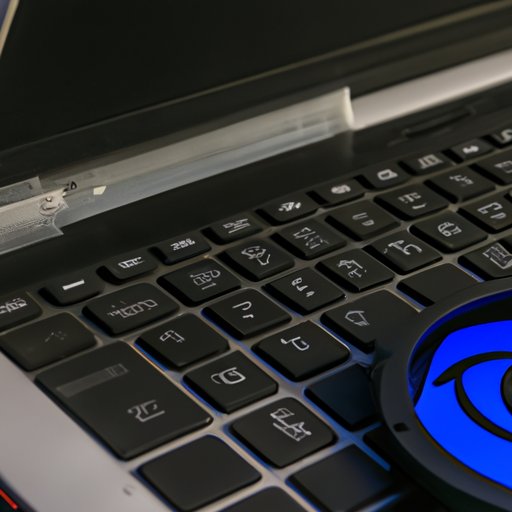Introduction
When it comes to laptops, one of the biggest problems is overheating. This can cause performance issues and even damage the internal components if left unchecked. It’s important to know how to keep your laptop cool in order to get the most out of your device. There are several steps you can take to ensure your laptop stays at an optimal temperature.
Position Your Laptop Properly
The first step in keeping your laptop cool is to position it properly. Place your laptop on a hard, flat surface such as a desk or table. Avoid placing your laptop on soft surfaces like blankets or pillows, as this can block airflow and cause your laptop to overheat. Make sure your laptop is not obstructed in any way and that there is plenty of room for air to circulate around it.
It’s also important to make sure that your laptop has adequate ventilation. If your laptop is placed near a wall or other obstruction, the heat generated by your laptop may be trapped and cause it to overheat. Make sure your laptop is situated so that air can freely flow around it.
Clean Your Laptop’s Fans and Vents
Dust and debris can accumulate in your laptop’s fans and vents, reducing airflow and causing your laptop to overheat. To prevent this, regularly inspect your laptop’s fans and vents for dust and debris. You can use a compressed air canister to blow out any dust or debris that has accumulated in the vents. Be careful not to use too much pressure, as this could damage your laptop’s internal components.
Use a Laptop Cooling Pad
Using a laptop cooling pad is another great way to keep your laptop cool. A cooling pad provides extra ventilation for your laptop and helps reduce heat buildup. The pad should be placed underneath your laptop and plugged into a USB port. This will allow the fans to draw in cooler air from underneath and help keep your laptop cool.
Monitor Your Computer’s Temperature
It’s also a good idea to monitor your laptop’s internal temperature. You can do this using a temperature monitoring program. This will allow you to keep track of your laptop’s internal temperature and identify any potential overheating issues before they become a problem.
Manage Your Power Settings
Finally, you can manage your laptop’s power settings to reduce the amount of heat generated. Adjust the power settings so that your laptop is not using more power than it needs to. This will reduce the amount of heat generated and help keep your laptop cool.
Conclusion
Keeping your laptop cool is essential for getting the most out of your device. By following these steps, you can ensure that your laptop runs optimally and avoid any potential overheating issues. Position your laptop properly, clean its fans and vents, use a cooling pad, monitor its temperature, and manage your power settings. Following these steps will help keep your laptop cool and running smoothly.


